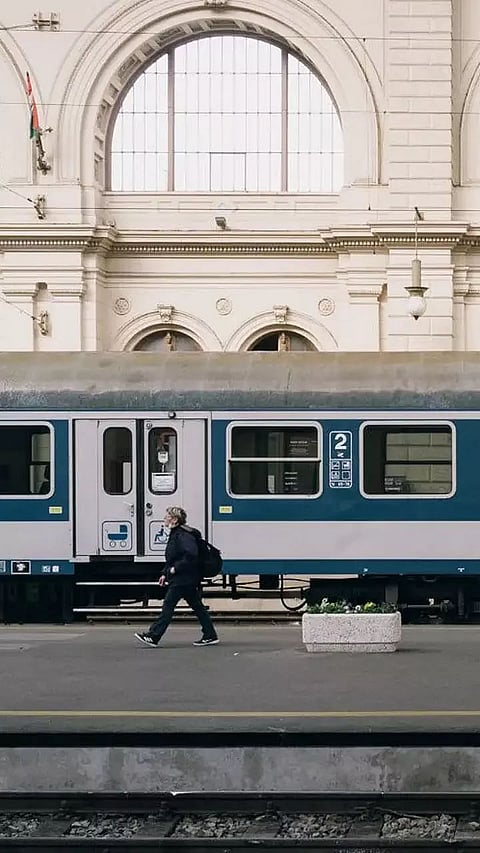The 10 most beautiful train stations in the world
Kuala Lumpur Railway Station
Designed by a British government architect named Arthur Benison Hubback and opened in 1910, the Kuala Lumpur station in Kuala Lumpur, Malaysia is a neo-Moorish delight, a fantastical agglomeration of minarets, dome-capped pavilions, and articulated archways. Now more of a hub for commuters than tourists, the magnificent white-and-cream Anglo-Asian station is still worth a stop.
Kanazawa Station
When Kanazawa’s circa 1898 station was upgraded in 2005, the initial reactions were mixed. The addition of the ultramodern glass-and-steel dome and giant drum-shaped wood gate struck many as ill-fitting. But visitors continue to flock to the Ishikawa, Japan station's dramatic add-ons, and the new structures’ allure competes handily with the historic town’s other attractions, including a geisha district and former samurai quarters.
Liège-Guillemins Railway Station
Spanish architect Santiago Calatrava designed the latest incarnation of the Liège, Belgiumis rail station using steel, glass, and white concrete. His version, completed in 2009, replaces a 1958 International Style building (which itself replaced an 1842 Beaux Arts structure), intentionally lacks a single façade in order to unite two neighbourhoods previously separated by the railroad tracks.
Milano Centrale
Italy’s second-largest station (after Rome’s Stazione Termini) opened in Milan in 1931. It was originally modelled after Union Station in Washington, D.C., but when Mussolini came into power, he expanded the Beaux Arts design to include elements of Art Nouveau and Art Deco. The stunning results feature 118,000 square feet of marble flooring, an array of muscular stone sculptures, and five train sheds covered with vast iron-and-glass canopies.
Hungerburg Station
Architect Zaha Hadid first made her mark on Austria’s Innsbruck region with the 2002 Bergisel ski-jump tower. She returned with this design for the Nordpark Cable Railway, a four-station funicular line that replaced a 100-year-old tram and transports passengers up a vertiginous incline for 1.1 miles.
Sirkeci Railway Station
As Istanbul’s gateway to Europe, the magnificent Sirkeci station was appropriately a melding of French Art Nouveau and Ottoman aesthetics. When it opened in 1890, it was considered quite modern for its time, boasting 300 gas lanterns and tile stoves imported from Austria. The station, which stands at the foot of the Bosporus Strait, features bands of bricks across its façade, clock towers, and stained-glass windows.
Antwerpen-Centraal Station
The glorious waiting hall of the Antwerp station, completed in 1905, is lavishly adorned with more than 20 kinds of marble and stone, but what keeps this from feeling ponderous is the counterpoint of soaring arched windows and skylights that fill the concourse with light. The upper train platform, too, features a magnificent vaulted iron-and-glass roof.
Haydarpaşa Railway Station
Less famous—but no less grand—than Istanbul’s Sirkeci station, Haydarpaşa has the distinction of being built on land reclaimed from the Bosporus Strait, which leaves it surrounded by water on three sides. The imposing neoclassical edifice, designed by German architects Otto Ritter and Helmut Conu, was inaugurated in 1909 on the birthday of the reigning sultan, Mehmed V.
Southern Cross Station, Melbourne
Stretching an entire city block, Melbourne’s elaborate station features an undulating roof that rests on a series of Y-shaped columns. The structure was renovated in 2005 (and renamed—it was previously known as Spencer Street Station, for its location) and now displays an innovative design by Grimshaw Architects.
Union Station
Father-son architects John and Donald Parkinson blended Spanish Colonial and Art Deco styles for Los Angeles’s main railway station, completed in 1939, which is the largest passenger train terminal in the western U.S. Patios line the walls of the station’s waiting room, while travertine marble covers the station’s interior walls on the lower level.

